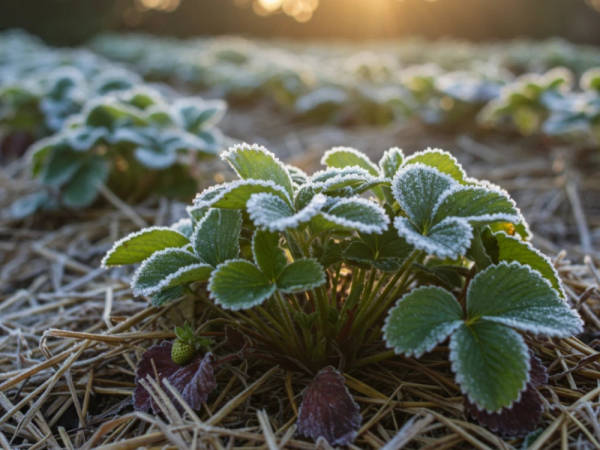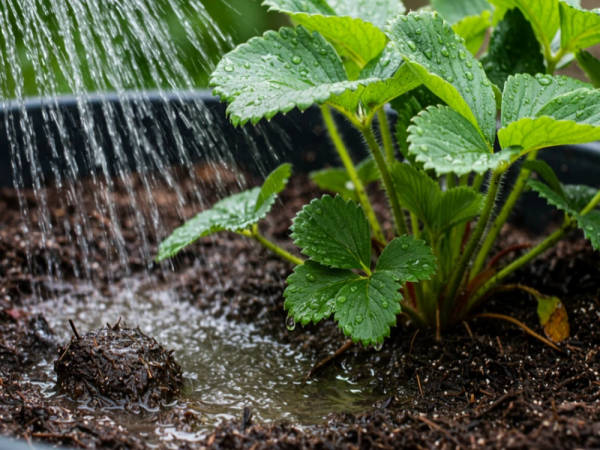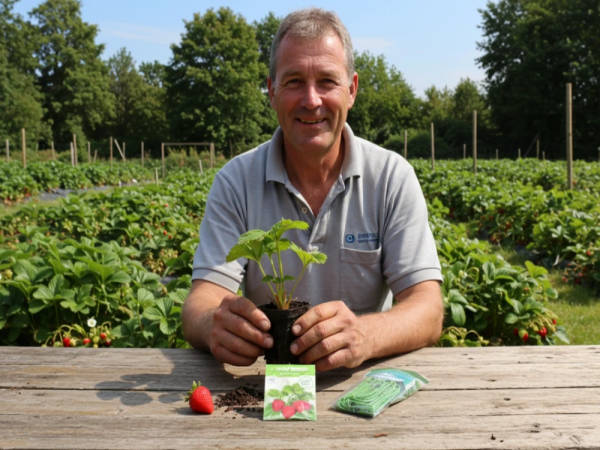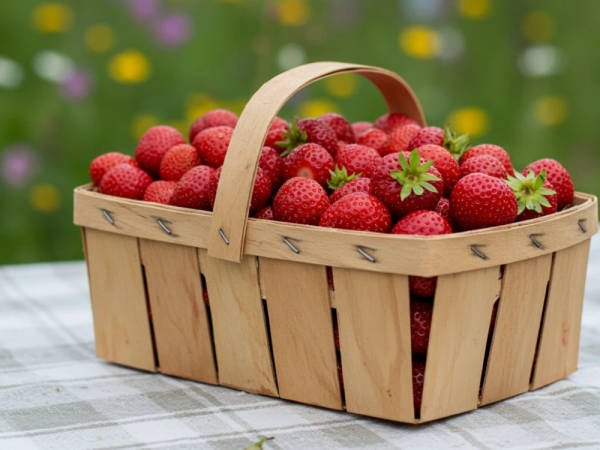Strawberries… just the name makes your mouth water, right? Those red, juicy fruits that bring back memories of summer sunshine and childhood. For me, strawberries are not just a fruit, but a feeling—of those hot days, hands stained with pink juice and the pride of plucking fresh strawberries from your own garden. I have been doing strawberry gardening for years, in every corner of my garden—be it raised bed strawberries or balcony pots. These fruits are easy to grow, and in return they give you so much sweetness that all the hard work is forgotten. Let me give you a guide on how to grow strawberries at home—so that every bite feels like love.
Why Strawberries Steal Our Hearts
Strawberries are the queen of summer, especially in colder regions like ours, where their season after winter is nothing short of a celebration. They are not fussy, but they need a little love and strawberry plant care. If you follow this strawberry planting guide, they will give you juicy, sweet fruits that will make your heart happy. This guide is for everyone who wants to experience the magic of growing strawberries at home in their small garden or balcony.
Cool Climates Love Strawberries
Strawberries love cool weather. They can withstand freezing temperatures in winter and heat as low as 32 degrees in summer. But if you want the best fruit from the best strawberry varieties for home gardens, climate between 15 and 27 degrees is their sweet spot. They're perfect for zones 5 to 10, meaning strawberries can be your friend no matter where you live.
All they need is a little protection from protecting strawberries from frost in winter and hot sun in summer. These are the little things we'll look at next.
 |
| Protecting strawberries from frost in a cool climate garden |
Rooted Close to the Earth
Strawberries have roots that stay very close to the ground, so they're easy to grow in container gardening strawberries or raised bed strawberries. They spread beautifully everywhere. But it's important to keep in mind the best soil for strawberries—they hate wet, soggy ground. Strawberries need moist soil, but not waterlogged soil. Loose, sandy soil with plenty of organic matter is best. If you mix some compost into the soil, they'll soak up the nutrients. It's even better if the soil pH is neutral or slightly acidic.
.webp?updatedAt=1747022805461) |
| Best soil for strawberries in raised bed gardening |
Sunlight and Wind: A Delicate Balance
Strawberries love sunlight for strawberries, but strong winds can bother them. Their broad, green leaves are sturdy, but can dry out in too much wind and heat. And if the leaves dry out, the fruit also becomes tough and less tasty. If you're growing strawberries in pots at home, such as on a balcony or terrace, keep them shaded by a railing, wall or other plants. A little love will make their fruit even juicier.
.webp?updatedAt=1747022761175) |
| Sunlight for strawberries with wind protection in a garden |
Moisture: The Key to Juicy Berries
Strawberries are daughters of the jungle. They love moist soil, but not wet. Getting the right how to water strawberries is a matter of life and death for them. If the soil gets waterlogged, these plants can wilt. But proper moisture and good soil will keep them blooming.
 |
| How to water strawberries for juicy berries |
How to Start Growing Strawberries
Growing strawberries for beginners can start in three ways. Each method is special in its own way, and I will tell you about them wholeheartedly.
 |
| Growing strawberries for beginners with seeds and runners |
From Seeds: A Path of Patience
If you choose how to grow strawberries from seeds, be prepared—it’s a long and demanding road. The seeds germinate easily, but it can take a year or two to bear fruit. If you decide to go this route, remember one thing—the seeds must be kept in the cold before planting. Call it nature’s magic, but this does make the seeds germinate better. And yes, strawberry seeds are hybrids, so the results can be unpredictable if you use store-bought strawberries or seeds from your own garden. This road is tricky, but if your heart tells you to, give it a try.
.webp?updatedAt=1747025763794) |
| How to grow strawberries from seeds indoors |
Runners: A Mother’s Love
Strawberry plants produce strawberry runners in their second year—these are tiny baby plants that stay attached to the mother. These can be cut off to grow new plants. When I propagate strawberry runners, I cut them off as soon as they show white roots underneath. You can keep them in water and let them grow roots or plant them directly in the soil. It's a good idea to cut off runners anyway, because they sap the mother plant's strength. Even if you don't want new plants, you should remove them.
.webp?updatedAt=1747025768185) |
| How to propagate strawberry runners in a garden |
Division: One Becomes Many
Strawberry plants turn into clumps in their third or fourth year. You can create lots of new plants by learning how to divide strawberry plants. This method is easy and can rejuvenate your whole bed. But remember, a clump of strawberries starts to get tired after five years. The third and fourth years are their golden years, when the fruit is the juiciest and most abundant.
.webp?updatedAt=174702568705) |
| How to divide strawberry plants for a thriving patch |
Planting Strawberries: The Right Way
So, now you have the plants in hand, and you're ready for how to plant strawberries in a container or raised bed. Whether you're growing strawberries in raised beds or pots, the method is the same. Let's take it easy.
.webp?updatedAt=1747029658581) |
| Strawberry planting guide for raised beds |
Choose the Perfect Spot
Strawberries need sunlight for strawberries—6 to 10 hours per day. Plant them in a place where water doesn't stagnate. How to water strawberries right is important, especially when the fruit is forming, but wet soil is poison for them. Mix in plenty of compost to get the best soil for strawberries. It will not only provide nutrition, but also keep the soil moist and light. I cover my bed with compost to keep the soil alive.
.webp?updatedAt=1747029666598) |
| Best spot for growing strawberries in raised beds |
Planting with Care
The most important thing in a strawberry planting guide is that their roots should be in the soil, but the stem (crown) should be above the ground. If the stem is buried in the soil, the plant can die. If you're replanting a plant from a pot, plant it at the same depth it was in the pot. Dig a small hole, place the plant, press down with soil and you're done! Plant on a cloudy, cool day to avoid plant shock.
.webp?updatedAt=1747029654090) |
| How to plant strawberries in a container with care |
Spread plants 8 to 12 inches apart as they spread widely. I plant in a zigzag fashion to accommodate more plants.
Mulching: Strawberries’ Shield
After planting, I always mulch strawberries. Spread dry grass or straw. It retains moisture, keeps the soil cool and prevents weeds. Strawberries get their name from “straw”, so it’s an old friend.
Watering with Love
After planting, water the plants well. Keep the soil moist in How to water strawberries, but not wet. For growing strawberries in pots at home, it is better to water from the bottom, so that the soil absorbs slowly and the nutrients do not flow away. In summer, soak small pots from the bottom for 4-6 hours. There is no need to water in winter for winter care for strawberries, because the plants are sleeping. In spring and autumn, water according to the season. In Strawberry harvest tips, pay special attention to moisture during fruit formation, otherwise the fruits may dry up.
Caring for Your Strawberries
Strawberry patch maintenance is easy. Just a little love and attention, and they will give you lots of fruit.
Fertilizing: A Boost of Strength
Strawberries need best fertilizer for strawberry plants twice a year—in the spring and in the early fall. Fertilizing in the spring gives strawberries plants strength so they can produce big fruit. If you delay, the fruit will be soft and less tasty. Fertilize new plants three weeks after you plant them. Fertilizing in the fall prepares the plants for winter care for strawberries. I use an organic fertilizer that is balanced (10-10-10 or 5-5-5). Work the fertilizer into the roots, not the leaves.
Types of Strawberries
There are three types of strawberries:
- June bearing: These produce lots of fruit once in the summer.
- Ever bearing: These growing everbearing strawberries produce fruit twice in the spring and summer, and in the fall if the weather is warm.
- Day Neutral: They bear fruit continuously between 4 and 32 degrees.
Each variety is planted in the same way, just the fruiting time is different.
Conclusion: A Berry-Full Journey
How to grow strawberries is not just gardening, but a beautiful relationship. These plants reward you with sunshine, hard work, and love. Whether you grow strawberries in a greenhouse or in a raised bed, just take care of a little bit—sunlight for strawberries, moisture, and love. Every year, when you pick the first strawberry with strawberry harvest tips, the taste will make you forget all the hard work. So, what are you waiting for? Start the magic of organic strawberry farming in your garden, and enjoy the summer in every bite.
